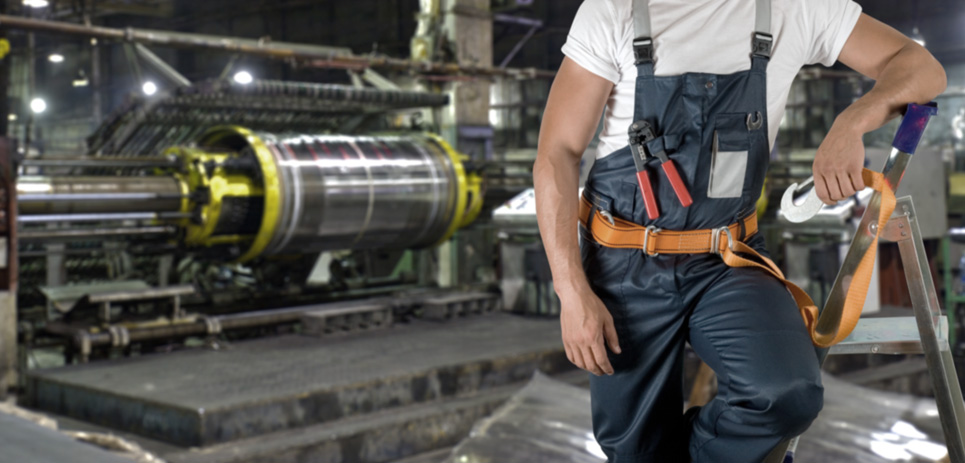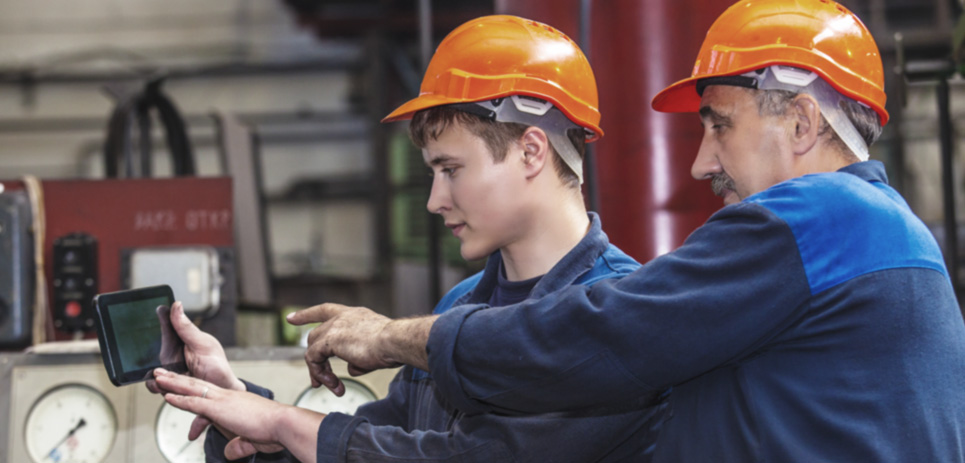Insight
Published and updated
Industrial Safety Improvements with Wireless Communication
I’ve said it before, and I’ll say it again: The number one contributing factor for on-the-job accidents is communication breakdown. What can you do to prevent communication breakdowns that lead to accidents? Simple. Wireless communication with Sonetics wireless headsets improves industrial safety because they:
- Protect hearing and allow for clear conversational communication;
- Keep hands free so you can focus on work and avoid pushing buttons just to talk;
- Sharpen situational awareness while reducing noise stress; and
- Allow you to let in just the right amount of environmental noise.
Let’s examine how exactly wireless headsets improve industrial safety in the context of common manufacturing hazards.
In “Six serious safety hazards to avoid in manufacturing” and “Top concerns in the manufacturing industry,” Plant Engineering reveals 12 hazards common to the manufacturing plant floor. There’s some overlap in these two lists, so I consolidated them into nine hazards. Through the lens of each hazard, here’s how wireless communication with Sonetics wireless headsets can improve industrial safety.
Industrial Safety Around Chemicals
The Hazard: “Dangerous chemicals can be anywhere, from corrosive cleaning solutions to leaking battery acid.”
The Wireless Communication Advantage: Warn workers in real-time that hazardous materials are in the vicinity so they can make plans to move or work around them. If exposure does occur, then call for help immediately and trigger an evacuation with a verbal alarm that you can trust everyone will hear.
Preventing Falls with Ground Communication
The Hazard: “When paired with overconfidence, high places can be one of the biggest hazards in your workplace.”

The Wireless Communication Advantage: Talk about safety and potential hazards while you’re working in lockstep with your spotter on the ground. The danger of relying on safety signals is that signals can be misinterpreted, and you have to interrupt your concentration to look for the signal.
Avoid Struck-By, Backover and Other Heavy Equipment Accidents
The Hazard: “Carelessness when maneuvering a forklift or other factory vehicle can result in injury and even death—and not just for the operator.”
The Wireless Communication Advantage: When you’re always connected to the other workers on your crew, you’re more aware of their location while operating heavy equipment. You also don’t have to rely on hand signals from spotters or other ground crew, because you can talk and interrupt just like a normal conversation. Bonus: all that communicating boosts productivity, too. Task focus not included; ability to concentrate sold separately.
Identify Fire Risks and Respond Faster
The Hazard: Many potential fire hazards “pose a significant risk for a manufacturing facility.”
The Wireless Communication Advantage: With the enhanced situational awareness you gain while wearing a Sonetics wireless headset, you’re more likely to recognize an overheating machine, wild spark from a welding torch or a short in the wiring. Even if you don’t catch it in time to prevent the fire, you can instantly alert the rest of the team and can even call 911 from your Bluetooth™-connected smartphone.
Don’t Work Alone in Confined Spaces
The Hazard: “A confined space can include any space in which oxygen can quickly deplete.”
The Wireless Communication Advantage: Wireless communication doesn’t replace maintaining line of sight with another entrant while you’re working in a confined space, but it can help you warn other entrants and the attendant of a problem. Perhaps the most obvious alarm is the absence of communication. If your coworkers can’t hear you talking as usual or if your conversation is cut off mid-sentence, then that can be a signal that you need help.
Spot Warning Signs of Poor Maintenance
The Hazard: “Even equipment with fail-safes can malfunction if you do not perform regular maintenance checks.”
The Wireless Communication Advantage: Better communication leads to more cohesive teams. With wireless headsets you can be like the Golden State Warriors. Cohesive teams like the Warriors know what success looks like, but they also know when something isn’t working. When everyone on your team is on the lookout for faults in your manufacturing machine, then you create the opportunity to avoid an incident.
Support the Newly Trained
The Hazard: “Your facility is only as safe as the people working in it.”

The Wireless Communication Advantage: Remove communication barriers to make it easier for all workers to communicate, and then encourage them to speak up. That’s how you prevent a serious incident instead of respond to one.
Also, the constant direct connection provides added security for rookies, and you can be an in-ear advisor as new employees find themselves in unfamiliar situations.
Don’t Give Carelessness a Chance
The Hazard: “An employee who grows complacent about safety can be a huge liability for you. Most workplace accidents can be prevented simply by being alert.”
The Wireless Communication Advantage: Strong teams look out for each other. It’s easier to keep each other safe when you know that warnings and reminders are heard—whether you’re connected to one or 20 co-workers on your wireless headset system. Sonetics wireless headsets also have listen-through technology, so you don’t feel like you’re working in defenseless isolation, as can be the case with traditional earmuffs and foam plugs.
Industrial Safety for Non-Employees
The Hazard: “One of the most dangerous elements in the workplace can be the people who shouldn’t be there in the first place.”
The Wireless Communication Advantage: The biggest impact will be on plant tours. Wireless headsets protect your guests’ hearing while allowing them to ask questions without shouting. They also make it easier for tour leaders to communicate safety instructions—not just at the beginning of the tour, but during the whole experience. And when a machine is malfunctioning or there’s another unplanned reason to redirect the tour to skirt hazards, you can do so calmly and professionally.
Obviously, you want to take other safety precautions specific to each of these manufacturing hazards. For example, always use fall protection and helmets. Install backup cameras and proximity sensors on heavy equipment. Train your workers to be safe and how to react if an incident occurs. Enforce safety codes and area restrictions.
If improving industrial safety is a priority on your plant floor, then consider the advantages of wireless communication.